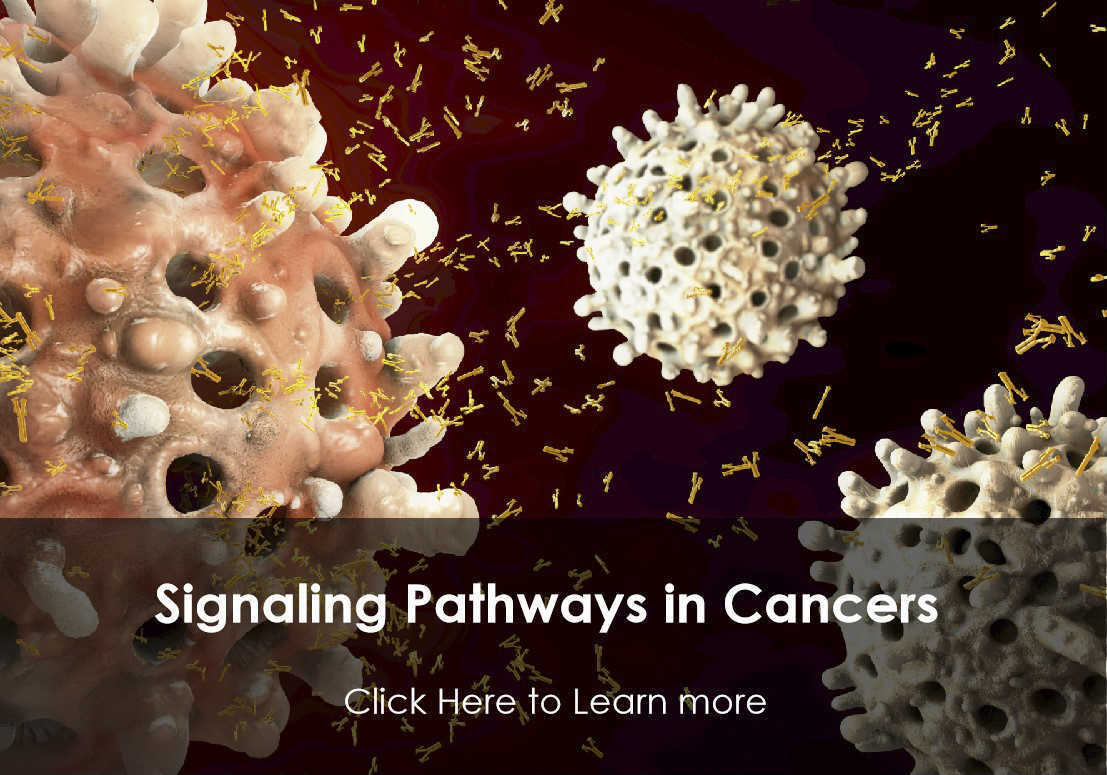OAS1
This gene is induced by interferons and encodes a protein that synthesizes 2',5'-oligoadenylates (2-5As). This protein activates latent RNase L, which results in viral RNA degradation and the inhibition of viral replication. Alternative splicing results in multiple transcript variants with different enzymatic activities. Polymorphisms in this gene have been associated with susceptibility to viral infection and diabetes mellitus, type 1. A disease-associated allele in a splice acceptor site influences the production of the p46 splice isoform. This gene is located in a cluster of related genes on chromosome 12. [provided by RefSeq, Feb 2016]
Full Name
2'-5'-Oligoadenylate Synthetase 1
Function
Interferon-induced, dsRNA-activated antiviral enzyme which plays a critical role in cellular innate antiviral response (PubMed:34581622).
In addition, it may also play a role in other cellular processes such as apoptosis, cell growth, differentiation and gene regulation. Synthesizes higher oligomers of 2'-5'-oligoadenylates (2-5A) from ATP which then bind to the inactive monomeric form of ribonuclease L (RNase L) leading to its dimerization and subsequent activation. Activation of RNase L leads to degradation of cellular as well as viral RNA, resulting in the inhibition of protein synthesis, thus terminating viral replication (PubMed:34581622).
Can mediate the antiviral effect via the classical RNase L-dependent pathway or an alternative antiviral pathway independent of RNase L. The secreted form displays antiviral effect against vesicular stomatitis virus (VSV), herpes simplex virus type 2 (HSV-2), and encephalomyocarditis virus (EMCV) and stimulates the alternative antiviral pathway independent of RNase L.
Isoform p46
When prenylated at C-terminal, acts as a double-stranded RNA (dsRNA) sensor specifically targeted to membranous replicative organelles in SARS coronavirus-2/SARS-CoV-2 infected cells where it binds to dsRNA structures in the SARS-CoV-2 5'-UTR and initiates a potent block to SARS-CoV-2 replication. Recognizes short stretches of dsRNA and activates RNase L. The binding is remarkably specific, with two conserved stem loops in the SARS-CoV-2 5'- untranslated region (UTR) constituting the principal viral target (PubMed:34581622).
The same mechanism is necessary to initiate a block to cardiovirus EMCV (PubMed:34581622).
Isoform p42
Not prenylated at C-terminal, is diffusely localized and unable to initiate a detectable block to SARS-CoV-2 replication.
In addition, it may also play a role in other cellular processes such as apoptosis, cell growth, differentiation and gene regulation. Synthesizes higher oligomers of 2'-5'-oligoadenylates (2-5A) from ATP which then bind to the inactive monomeric form of ribonuclease L (RNase L) leading to its dimerization and subsequent activation. Activation of RNase L leads to degradation of cellular as well as viral RNA, resulting in the inhibition of protein synthesis, thus terminating viral replication (PubMed:34581622).
Can mediate the antiviral effect via the classical RNase L-dependent pathway or an alternative antiviral pathway independent of RNase L. The secreted form displays antiviral effect against vesicular stomatitis virus (VSV), herpes simplex virus type 2 (HSV-2), and encephalomyocarditis virus (EMCV) and stimulates the alternative antiviral pathway independent of RNase L.
Isoform p46
When prenylated at C-terminal, acts as a double-stranded RNA (dsRNA) sensor specifically targeted to membranous replicative organelles in SARS coronavirus-2/SARS-CoV-2 infected cells where it binds to dsRNA structures in the SARS-CoV-2 5'-UTR and initiates a potent block to SARS-CoV-2 replication. Recognizes short stretches of dsRNA and activates RNase L. The binding is remarkably specific, with two conserved stem loops in the SARS-CoV-2 5'- untranslated region (UTR) constituting the principal viral target (PubMed:34581622).
The same mechanism is necessary to initiate a block to cardiovirus EMCV (PubMed:34581622).
Isoform p42
Not prenylated at C-terminal, is diffusely localized and unable to initiate a detectable block to SARS-CoV-2 replication.
Biological Process
Antiviral innate immune responseManual Assertion Based On ExperimentIEP:ARUK-UCL
Cellular response to interferon-alphaIDA:UniProtKB
Cellular response to interferon-betaManual Assertion Based On ExperimentIDA:ARUK-UCL
Cellular response to virusManual Assertion Based On ExperimentIEP:ARUK-UCL
Defense response to bacteriumManual Assertion Based On ExperimentIMP:ARUK-UCL
Defense response to virusManual Assertion Based On ExperimentIDA:UniProtKB
Glucose homeostasisManual Assertion Based On ExperimentIMP:UniProtKB
Glucose metabolic processManual Assertion Based On ExperimentIMP:UniProtKB
Interleukin-27-mediated signaling pathwayManual Assertion Based On ExperimentIEP:ARUK-UCL
Negative regulation of chemokine (C-X-C motif) ligand 2 productionManual Assertion Based On ExperimentIMP:ARUK-UCL
Negative regulation of IP-10 productionManual Assertion Based On ExperimentIMP:ARUK-UCL
Negative regulation of type I interferon-mediated signaling pathwayManual Assertion Based On ExperimentIMP:ARUK-UCL
Negative regulation of viral genome replicationManual Assertion Based On ExperimentIDA:UniProtKB
Positive regulation of cellular respirationIDA:ARUK-UCL
Positive regulation of interferon-beta productionManual Assertion Based On ExperimentIMP:ARUK-UCL
Positive regulation of monocyte chemotactic protein-1 productionManual Assertion Based On ExperimentIMP:ARUK-UCL
Positive regulation of tumor necrosis factor productionManual Assertion Based On ExperimentIMP:ARUK-UCL
Protein complex oligomerizationIDA:UniProtKB
Regulation of ribonuclease activityManual Assertion Based On ExperimentIDA:ARUK-UCL
Response to virusManual Assertion Based On ExperimentIDA:UniProtKB
Surfactant homeostasisManual Assertion Based On ExperimentIMP:ARUK-UCL
Toll-like receptor 3 signaling pathwayManual Assertion Based On ExperimentIMP:ARUK-UCL
Toll-like receptor 4 signaling pathwayManual Assertion Based On ExperimentIMP:ARUK-UCL
Type I interferon signaling pathwayIMP:ARUK-UCL
Cellular response to interferon-alphaIDA:UniProtKB
Cellular response to interferon-betaManual Assertion Based On ExperimentIDA:ARUK-UCL
Cellular response to virusManual Assertion Based On ExperimentIEP:ARUK-UCL
Defense response to bacteriumManual Assertion Based On ExperimentIMP:ARUK-UCL
Defense response to virusManual Assertion Based On ExperimentIDA:UniProtKB
Glucose homeostasisManual Assertion Based On ExperimentIMP:UniProtKB
Glucose metabolic processManual Assertion Based On ExperimentIMP:UniProtKB
Interleukin-27-mediated signaling pathwayManual Assertion Based On ExperimentIEP:ARUK-UCL
Negative regulation of chemokine (C-X-C motif) ligand 2 productionManual Assertion Based On ExperimentIMP:ARUK-UCL
Negative regulation of IP-10 productionManual Assertion Based On ExperimentIMP:ARUK-UCL
Negative regulation of type I interferon-mediated signaling pathwayManual Assertion Based On ExperimentIMP:ARUK-UCL
Negative regulation of viral genome replicationManual Assertion Based On ExperimentIDA:UniProtKB
Positive regulation of cellular respirationIDA:ARUK-UCL
Positive regulation of interferon-beta productionManual Assertion Based On ExperimentIMP:ARUK-UCL
Positive regulation of monocyte chemotactic protein-1 productionManual Assertion Based On ExperimentIMP:ARUK-UCL
Positive regulation of tumor necrosis factor productionManual Assertion Based On ExperimentIMP:ARUK-UCL
Protein complex oligomerizationIDA:UniProtKB
Regulation of ribonuclease activityManual Assertion Based On ExperimentIDA:ARUK-UCL
Response to virusManual Assertion Based On ExperimentIDA:UniProtKB
Surfactant homeostasisManual Assertion Based On ExperimentIMP:ARUK-UCL
Toll-like receptor 3 signaling pathwayManual Assertion Based On ExperimentIMP:ARUK-UCL
Toll-like receptor 4 signaling pathwayManual Assertion Based On ExperimentIMP:ARUK-UCL
Type I interferon signaling pathwayIMP:ARUK-UCL
Cellular Location
Cytoplasm
Mitochondrion
Nucleus
Microsome
Endoplasmic reticulum
Secreted
Associated with different subcellular fractions such as mitochondrial, nuclear, and rough/smooth microsomal fractions.
Mitochondrion
Nucleus
Microsome
Endoplasmic reticulum
Secreted
Associated with different subcellular fractions such as mitochondrial, nuclear, and rough/smooth microsomal fractions.
PTM
Isoform p46
Prenylated at C-terminal. C-terminal prenylation is necessary to initiate a block to SARS-CoV-2 and is associated with protection from severe COVID-1. The prenylated form is targeted to perinuclear structures rich in viral dsRNA, whereas the non-prenylated form is diffusely localized and unable to initiate a detectable block to SARS-CoV-2 replication (Probable). C-terminal prenylation is also necessary to initiate a block to cardiovirus EMCV (Probable).
Isoform p42
Not prenylated at C-terminal. The non-prenylated form is diffusely localized and unable to initiate a detectable block to SARS-CoV-2 replication.
Prenylated at C-terminal. C-terminal prenylation is necessary to initiate a block to SARS-CoV-2 and is associated with protection from severe COVID-1. The prenylated form is targeted to perinuclear structures rich in viral dsRNA, whereas the non-prenylated form is diffusely localized and unable to initiate a detectable block to SARS-CoV-2 replication (Probable). C-terminal prenylation is also necessary to initiate a block to cardiovirus EMCV (Probable).
Isoform p42
Not prenylated at C-terminal. The non-prenylated form is diffusely localized and unable to initiate a detectable block to SARS-CoV-2 replication.
View more
Anti-OAS1 antibodies
+ Filters
 Loading...
Loading...
Target: OAS1
Host: Rabbit
Antibody Isotype: IgG
Specificity: Human
Clone: D1W3A
Application*: WB, IP
Target: OAS1
Host: Mouse
Specificity: Human
Clone: CBXO-0331
Application*: WB, IP, IF, E
Target: OAS1
Host: Rabbit
Specificity: Human
Clone: CBXO-0016
Application*: WB, IP
Target: OAS1
Host: Mouse
Antibody Isotype: IgG2a
Specificity: Human
Clone: CBXO-0015
Application*: WB, P, F, IF
Target: OAS1
Host: Mouse
Antibody Isotype: IgG2a, κ
Specificity: Human
Clone: CBXO-0014
Application*: E, P
Target: OAS1
Host: Mouse
Antibody Isotype: IgG2a, κ
Specificity: Human
Clone: 2D4
Application*: E, IF, IH, IP
Target: OAS1
Host: Mouse
Antibody Isotype: IgG
Specificity: Rat
Clone: CBLQO-002
Application*: WB, IC, P, C, E
Target: OAS1
Host: Mouse
Antibody Isotype: IgG
Specificity: Human
Clone: CBLQO-001
Application*: WB, IC, P, C, E
More Infomation
Hot products 
-
Mouse Anti-AOC3 Recombinant Antibody (CBYY-0014) (CBMAB-0014-YY)

-
Mouse Anti-CFL1 Recombinant Antibody (CBFYC-1771) (CBMAB-C1833-FY)

-
Mouse Anti-ENPP1 Recombinant Antibody (CBFYE-0159) (CBMAB-E0375-FY)

-
Mouse Anti-dsDNA Recombinant Antibody (22) (CBMAB-AP1954LY)

-
Mouse Anti-BCL6 Recombinant Antibody (CBYY-0435) (CBMAB-0437-YY)

-
Mouse Anti-ARID1B Recombinant Antibody (KMN1) (CBMAB-A3546-YC)

-
Mouse Anti-C5B-9 Recombinant Antibody (CBFYA-0216) (CBMAB-X0304-FY)

-
Mouse Anti-ACKR3 Recombinant Antibody (V2-261265) (CBMAB-C1023-LY)

-
Mouse Anti-CFL1 (Phospho-Ser3) Recombinant Antibody (CBFYC-1770) (CBMAB-C1832-FY)

-
Mouse Anti-ASH1L Monoclonal Antibody (ASH5H03) (CBMAB-1372-YC)

-
Mouse Anti-BACE1 Recombinant Antibody (CBLNB-121) (CBMAB-1180-CN)

-
Mouse Anti-ABL2 Recombinant Antibody (V2-179121) (CBMAB-A0364-YC)

-
Mouse Anti-B2M Recombinant Antibody (CBYY-0050) (CBMAB-0050-YY)

-
Mouse Anti-DES Monoclonal Antibody (440) (CBMAB-AP1857LY)

-
Mouse Anti-CCN2 Recombinant Antibody (CBFYC-2383) (CBMAB-C2456-FY)

-
Mouse Anti-AKT1 Recombinant Antibody (V2-180546) (CBMAB-A2070-YC)

-
Mouse Anti-8-oxoguanine Recombinant Antibody (V2-7697) (CBMAB-1869CQ)

-
Mouse Anti-AAV-5 Recombinant Antibody (V2-503417) (CBMAB-V208-1369-FY)

-
Mouse Anti-ATM Recombinant Antibody (2C1) (CBMAB-A3970-YC)

-
Mouse Anti-C5b-9 Recombinant Antibody (aE11) (CBMAB-AO138LY)

For Research Use Only. Not For Clinical Use.
(P): Predicted
* Abbreviations
- AActivation
- AGAgonist
- APApoptosis
- BBlocking
- BABioassay
- BIBioimaging
- CImmunohistochemistry-Frozen Sections
- CIChromatin Immunoprecipitation
- CTCytotoxicity
- CSCostimulation
- DDepletion
- DBDot Blot
- EELISA
- ECELISA(Cap)
- EDELISA(Det)
- ESELISpot
- EMElectron Microscopy
- FFlow Cytometry
- FNFunction Assay
- GSGel Supershift
- IInhibition
- IAEnzyme Immunoassay
- ICImmunocytochemistry
- IDImmunodiffusion
- IEImmunoelectrophoresis
- IFImmunofluorescence
- IGImmunochromatography
- IHImmunohistochemistry
- IMImmunomicroscopy
- IOImmunoassay
- IPImmunoprecipitation
- ISIntracellular Staining for Flow Cytometry
- LALuminex Assay
- LFLateral Flow Immunoassay
- MMicroarray
- MCMass Cytometry/CyTOF
- MDMeDIP
- MSElectrophoretic Mobility Shift Assay
- NNeutralization
- PImmunohistologyp-Paraffin Sections
- PAPeptide Array
- PEPeptide ELISA
- PLProximity Ligation Assay
- RRadioimmunoassay
- SStimulation
- SESandwich ELISA
- SHIn situ hybridization
- TCTissue Culture
- WBWestern Blot

Online Inquiry







